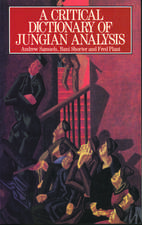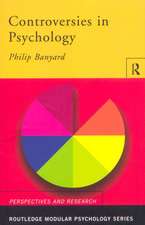The Image and Appearance of the Human Body
Autor Paul Schilderen Limba Engleză Hardback – 24 iun 1999
| Toate formatele și edițiile | Preț | Express |
|---|---|---|
| Paperback (1) | 491.57 lei 6-8 săpt. | |
| Taylor & Francis – 2 dec 2014 | 491.57 lei 6-8 săpt. | |
| Hardback (1) | 1548.62 lei 6-8 săpt. | |
| Taylor & Francis – 24 iun 1999 | 1548.62 lei 6-8 săpt. |
Preț: 1548.62 lei
Preț vechi: 1888.56 lei
-18% Nou
Puncte Express: 2323
Preț estimativ în valută:
296.33€ • 322.89$ • 249.70£
296.33€ • 322.89$ • 249.70£
Carte tipărită la comandă
Livrare economică 23 aprilie-07 mai
Preluare comenzi: 021 569.72.76
Specificații
ISBN-13: 9780415210812
ISBN-10: 041521081X
Pagini: 362
Dimensiuni: 138 x 216 mm
Greutate: 0.56 kg
Ediția:1
Editura: Taylor & Francis
Colecția Routledge
Locul publicării:Oxford, United Kingdom
ISBN-10: 041521081X
Pagini: 362
Dimensiuni: 138 x 216 mm
Greutate: 0.56 kg
Ediția:1
Editura: Taylor & Francis
Colecția Routledge
Locul publicării:Oxford, United Kingdom
Cuprins
INTRODUCTION; Part 1 THE PHYSIOLOGICAL BASIS OF THE BODY-IMAGE; Chapter 1 Postural and tactile impressions in relation to the body-image; Chapter 2 Localization on the skin and the optic Part of the body-image; Chapter 3 Further remarks on the apparatus which serves localization; Chapter 4 Imperception of impairment of somatic functions and of Part s of the body-image (body-image imperception); Chapter 5 Alloaesthesia, non-perception, right and left, symaesthesia in the body-schema; Chapter 6 Some remarks about the relation of the body schema to tactile—kinaesthetic movements; Chapter 7 Agnosia concerning the body-image (autotopagnosia); fingeragnosia; Chapter 8 Interrelations of the body-image; Chapter 9 Apraxia and agnosia in their relations to the schema of the body; Chapter 10 Remarks on human action; Chapter 11 Summary and recapitulation on apraxia and agnosia and the representations of movement; Chapter 12 Expressive and reflectory movements; Chapter 13 The phantom; Chapter 14 Psychogenic body-image imperception and allochiria. Their relation to organic changes; Chapter 15 Muscle tone and body-image. The persistence of tone; Chapter 16 The influence of habitual posture on the postural model; Chapter 17 The image of the face. Autoscopic experiments; Chapter 18 How we perceive the outer surface of our body; Chapter 19 The openings of the body; Chapter 20 The heavy mass of the body; Chapter 21 The vestibular influence on the perception of the weight of the body; Chapter 22 Pain; Chapter 23 Development of the body-image; Chapter 24 Two deceptions. The influence of the optic sphere on the body-image; Chapter 25 The body-image in clouded consciousness and the vestibular influence on the postural model of the body; Part 2 THE LIBIDINOUS STRUCTURE OF THE BODY-IMAGE; Chapter 26 Narcissism and the love of one's own body; Chapter 27 Erogenic zones of the body-image; Chapter 28 Neurasthenia; Chapter 29 Depersonalization; Chapter 30 Hypochondria; Chapter 31 Pain and libido; Chapter 32 A case of loss of unity in the body-image; Chapter 33 Hysteria; Chapter 34 Some principles concerning the libidinous structure of the body-image; Chapter 35 Conversion; Chapter 36 Organic disease; Chapter 37 Further remarks on expansion and destruction of the body-image; Chapter 38 Libidinous development of the body-image; Chapter 39 Changing the body-image by clothing, and the psychology of clothes; Chapter 40 Gymnastics, dance and expressive movements; Part 3 SOCIOLOGY OF THE BODY-IMAGE; Chapter 41 Space and the body-image; Chapter 42 On curiosity and on the expression of emotions; Chapter 43 Preliminary remarks on the relation between body-images; Chapter 44 Erythrophobia (fear of blushing) as an instance of a social neurosis; Chapter 45 Social relations of body-images. The social distance; Chapter 46 Imitation and the body-image; Chapter 47 On identification; Chapter 48 Beauty and body-image; Chapter 49 Variability of the body-image;



















